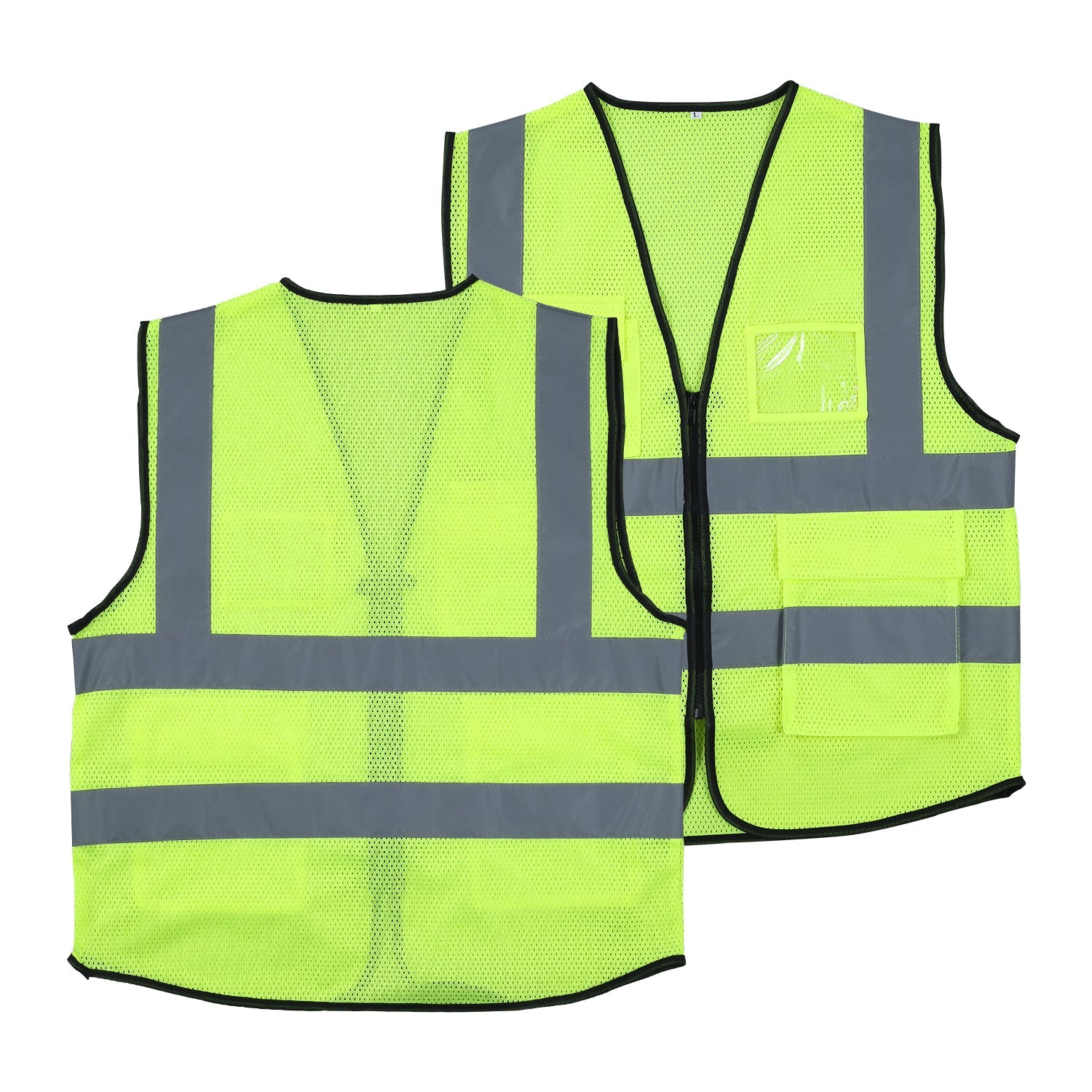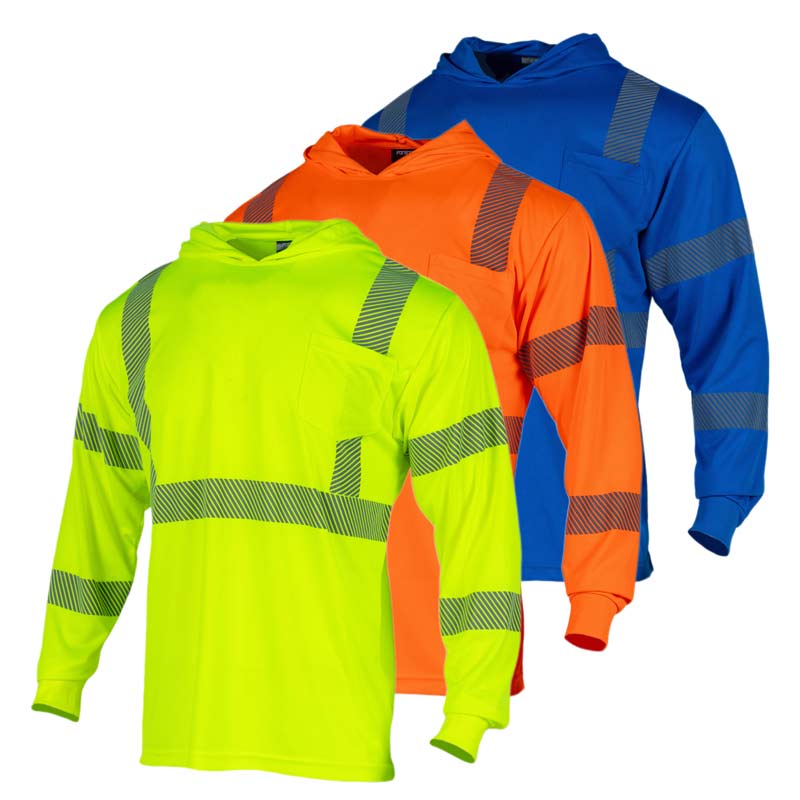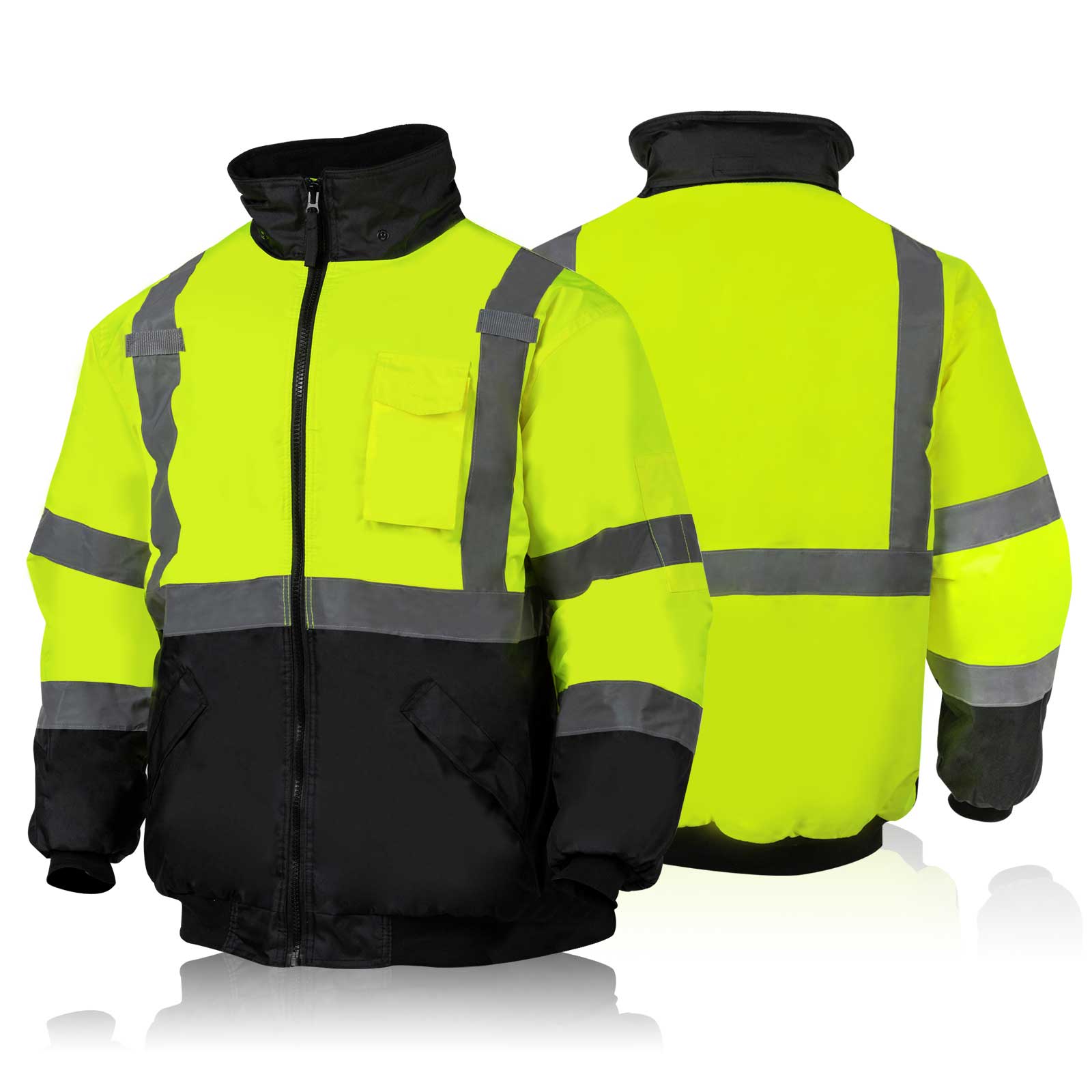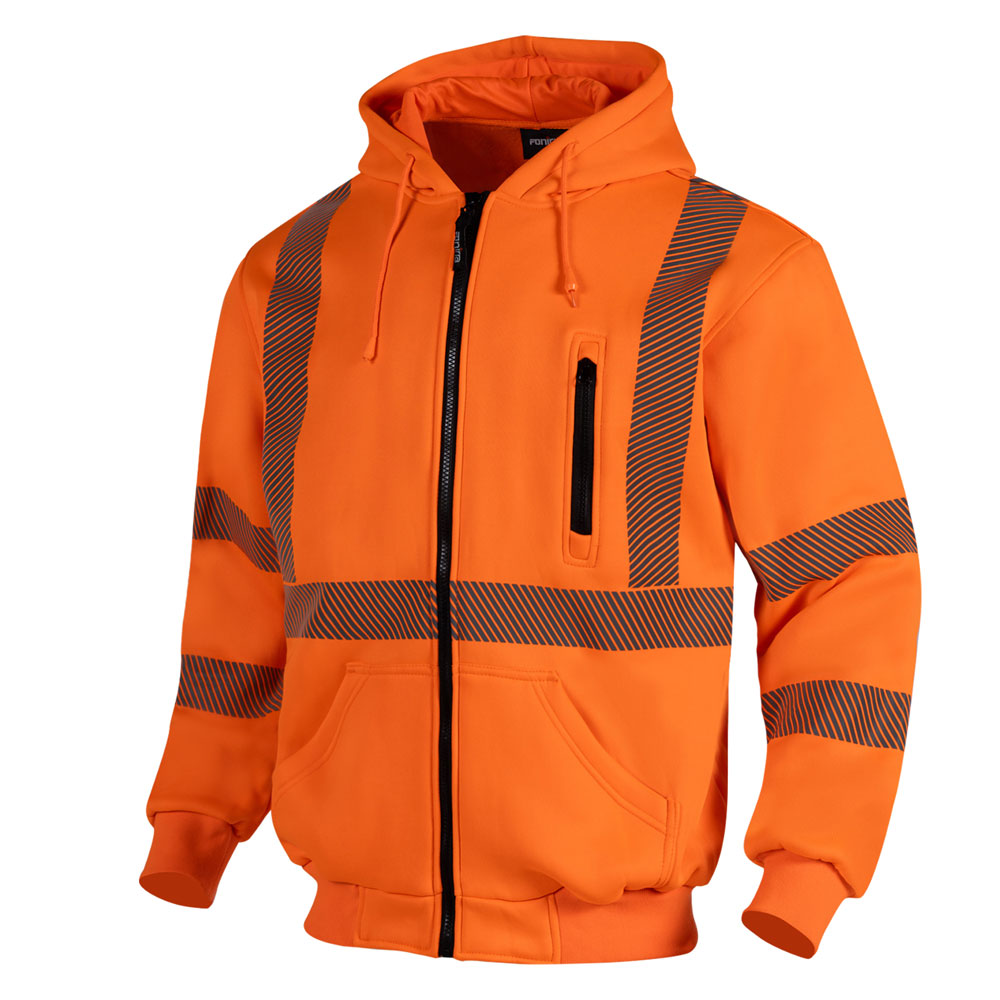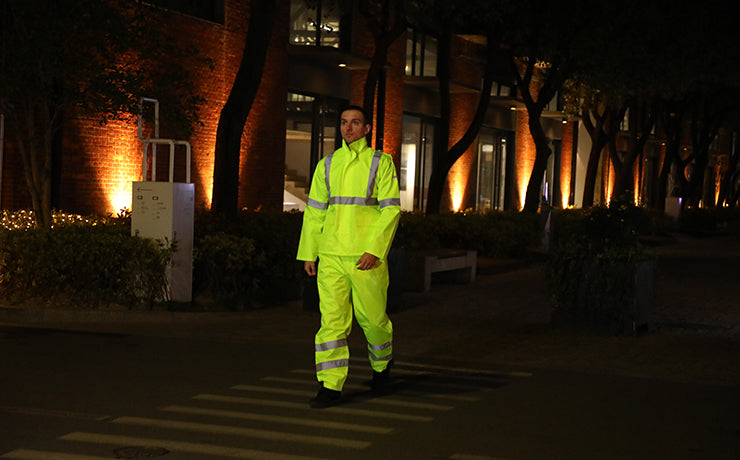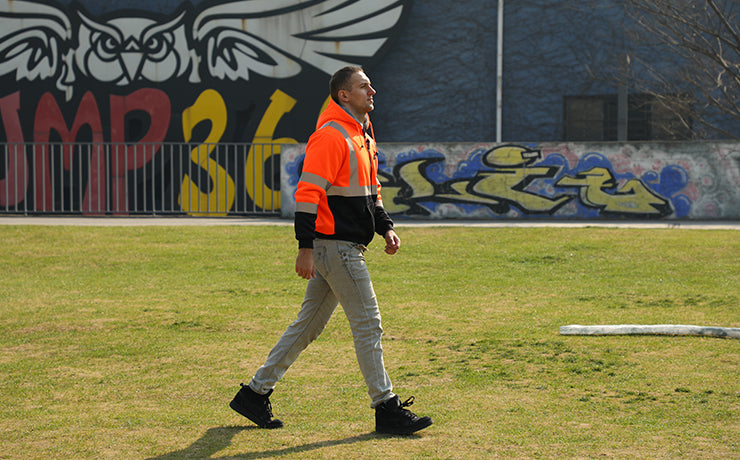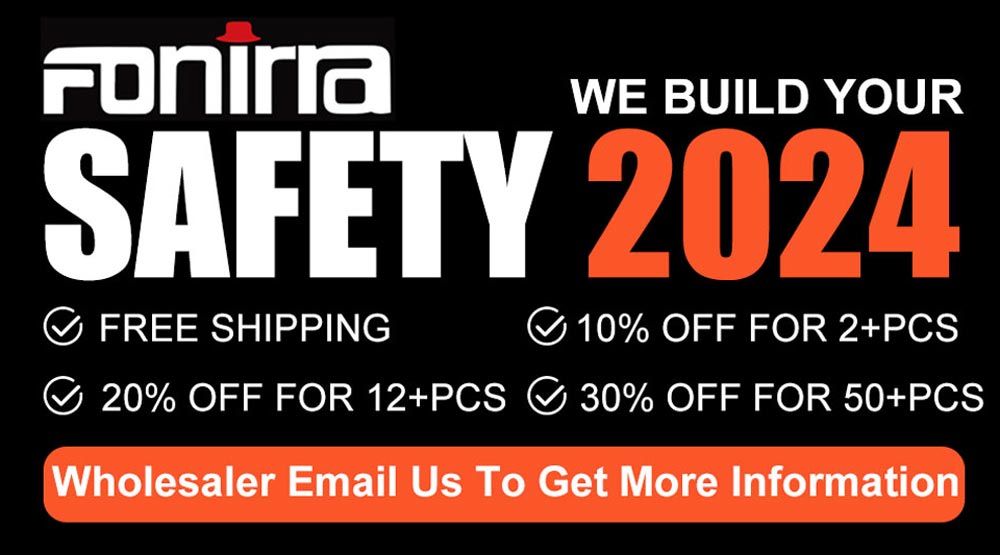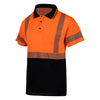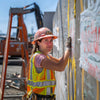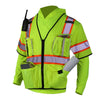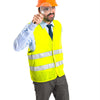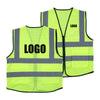Learning About Class 2 and Class 3 Vest/Hard Hats for Building Sites
Introduction:
Construction sites are dangerous places. There isn't one single shape that these risks may take. Consequently, it is crucial that all workers comply to the regulation of wearing protective equipment and give the highest emphasis to making sure everyone is safe. Since safety vests are so effective in increasing visibility and averting mishaps, they are often regarded as an essential piece of PPE. This article looks at the role that safety vests, particularly Class 2 and Class 3 vests, play in keeping construction sites risk-free.

The aim of this study is to enhance comprehension of Class 2 and Class 3 safety vests utilized in construction sites. By examining the characteristics and requirements of these safety vests, this research seeks to provide a comprehensive understanding of their purpose and significance in ensuring the safety of workers in construction environments.
The Value of Wearing a Safety Vest While Working on a Construction Site:
Construction sites are often noisy, crowded places with lots of people and machinery moving about with people doing different things all at once. Worker identification is facilitated by the visual signal supplied by safety vests, allowing for faster recognition even at longer distances. By making the wearer more visible, these vests assist make the workplace safer and minimize the likelihood of accidents.
Class 2 Safety Vests:
Class 2 safety vests are designed for usage in environments posing a moderate risk and calling for increased visibility. They may be used in comparable settings to those of airport ground crews, construction sites, utility workers, survey teams, and so on. Features unique to Class 2 safety vests are as follows:
- Material that is reflective:Class 2vests include reflective strips sewn into the fabric to increase the wearer's visibility at all times of day and night. The reflective characteristics of these tapes will make the user more noticeable to others around them by reflecting light back to its source.
- A minimum amount of reflective material should be used:In order to meet regulations, Class 2vests must include at least 201 square inches of fluorescent material. The recommendations prioritized user safety. To achieve visibility regulations, the vest must be manufactured with enough bright tape. This section ensures the vest has enough fluorescent tape to fulfill the legislation.
- Material for Background:The majority of Class 2vests are equipped with highly visible tape or material, enhancing the wearer's visibility even in daylight hours.
Class 3 Safety Vests:
Class 3 safety vests maximize visibility. These vests should be worn in dark, dangerous workplaces. These safety precautions should be taken more seriously in work zones where autos move above 50 mph or if visibility is reduced due to weather. They perform effectively in areas with heavy automobile traffic above 50 mph. Class 3 safety vests are associated with the following traits:
- The maximum amount of reflective material that can be used:A reflective patch with a minimum area of 310 square inches and a minimum reflectivity rating of 2 is required to be affixed to all Class 3vests. This guarantees that the user will have complete protection while maintaining their ability to see properly.
- Enhancements:Class 3vests may on occasion come with supplemental features in addition to their standard set, such as sleeves with a bright coating. The person who puts on one of these vests not only makes himself more visible to others but also increases the level of protection they get from possible threats.
- Temperature and weather conditions:Workers who are wearing Class 3vests, which have been developed to improve visibility even in less-than-ideal weather situations (such as rain, fog, or other difficult environmental conditions), are able to be visible even when these conditions are present because the vests have been constructed to do so.

Choosing the Right Safety Vest:
Do a risk evaluation before purchasing construction site safety vests. Thus, one can determine the labor and danger involved. Situation analyses need various considerations and inquiries. Visibility, traffic, and safety are crucial. Class 2 vests are for moderate danger, whereas Class 3 vests are for extreme risk.
Conclusion:
On construction sites, safety vests are an essential piece of personal protective equipment (PPE) for the protection of employees. Class 2 and Class 3 safety vests both provide some measure of protection and safety to their wearers, albeit the details of that protection vary based on the particular hazards that exist at any given time in the workplace. This is due to the fact that each workplace is unique, as are the specific risks that employees face. Employers that are well-versed in the distinctions between these categories and the vests' many varieties may outfit their employees with the vests most suited to their profession. The well-being of the workers and the avoidance of injuries should be given first priority on the construction site. This is the very first and crucial step that must be taken. This may be done by supplying the facility's employees with necessary PPE, such as safety vests, which play a significant part in protecting the employees' well-being on the job.

THE INFORMATION BELOW IS ABOUT PERSONAL PROTECTIVE EQUIPMENT (PPE) AND SAFETY VESTS, WHICH ARE USED ON BUILDING SITES.
- An in-depth risk assessment should be conducted:It is essential to evaluate the building site thoroughly for potential risks and hazards before selecting safety vests. Traffic patterns, lighting conditions, weather patterns, and the types of jobs performed by employees are just a few of the variables that should be considered during an evaluation. This evaluation will help determine which kind of safety vest is required.
- Provide proper training:It is imperative to provide comprehensive training to all employees regarding the significance of safety vests and their proper utilization. The individuals should be educated on the appropriate methods for fitting safety vests, as well as the necessary visibility requirements and maintenance procedures associated with these vests. Promote a culture that prioritizes safety awareness and adherence to personal protective equipment (PPE) protocols.
- Choose quality and compliant safety vests:It is advisable to allocate resources towards the acquisition of safety vests of superior quality that conform to the pertinent safety regulations and standards. It is a good idea to look for vests that have a backdrop that glows in the dark, reflective tape, and materials that are durable. It is recommended to check for the existence of certifying labels or marks in order to determine whether or not the product complies with the safety standards that have been set.
- Consider additional PPE:Safety vests play a crucial role in enhancing visibility, yet it is imperative to acknowledge that they should not be regarded as the exclusive personal protective equipment (PPE) offered at construction sites. In light of the specific tasks and potential hazards at hand, it is advisable to contemplate the provision of supplementary protective equipment to workers, including but not limited to hard hats, protective glasses, protective gloves, steel-toed boots, and protection for their hearing.

Construction safety clothing/workwear
- Regularly inspect and maintain safety vests:Regular inspections should be carried out to verify the proper condition of safety vests. Inspect the object for any indications of physical deterioration, such as wear and tear, impaired reflective tape, or diminished vibrancy of fluorescent backgrounds. It is recommended to replace any vests that no longer adhere to the requisite visibility standards.
- Promote proper vest usage:It is strongly recommended that workers consistently wear safety vests while present on-site, irrespective of their direct involvement in high-risk activities. Enforce explicit regulations that require the utilization of safety vests in allocated zones and during prescribed activities. Promote the establishment of a culture centered around accountability and demonstrate leadership through personal example.
- Stay updated on safety regulations:It is imperative to stay informed about any modifications or revisions in safety rules and policies pertaining to safety vests and personal protective equipment (PPE) within the construction sector. In order to uphold a secure working environment, it is imperative to adhere to the regulations set forth by local, state, and federal authorities.
The health of people who work in building must always come first. The chances of accidents and injuries may be reduced by adopting the aforementioned suggestions and increasing security measures

